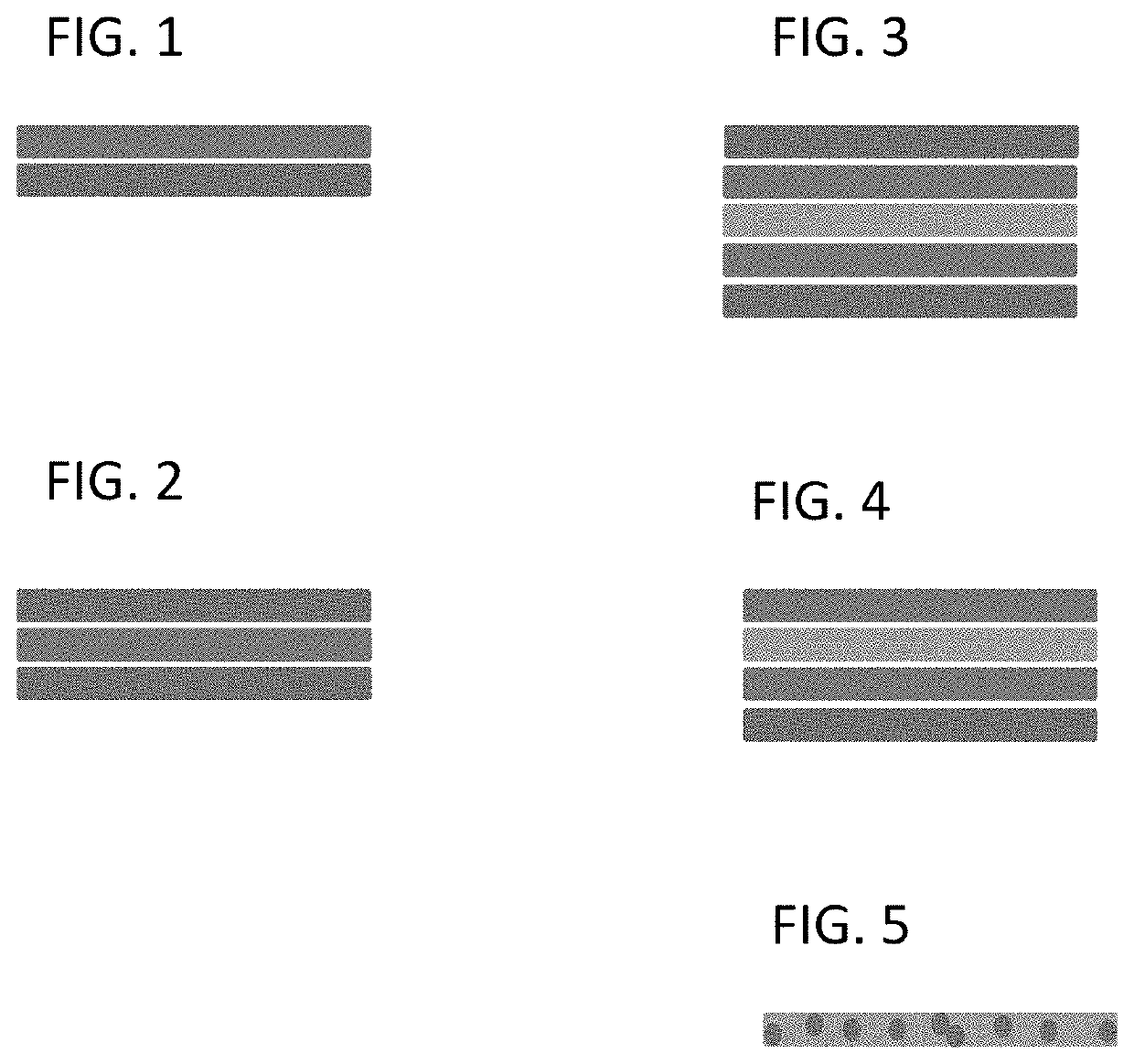Matrix comprising bioactive glass
- Summary
- Abstract
- Description
- Claims
- Application Information
AI Technical Summary
Benefits of technology
Problems solved by technology
Method used
Image
Examples
example 1
re of Flexible Matrix Containing Bioactive Glass to Guide Tissue Regeneration for Volumetric Tissue Loss
[0078]Bioactive glass was prepared using glass melting procedures in which the glass formers described in U.S. Pat. No. 8,337,875 were used to impart desired biodegradability—borate, silicate, and phosphate at 52.95 wt %, 0 wt %, 4.0 wt %. In accordance with U.S. Pat. No. 8,337,875, this material was further doped with Cu and Zn to enhance vasculogenesis. However, to optimize proteoglycan deposition within newly formed basement matrix, the sulfate salts of zinc and copper were utilized. As an alternative approach to enhance vasculogenesis, doping can be achieved using cobalt oxide. Lithium is further added to drive WNT signaling, recapitulation embryonic tissue formation.
[0079]A layer of bioactive glass in the form of fibers or porous spheres is laid down on a sterile surface. Successively, polymer-based layers are added to the glass layer using either a solution of the appropriat...
example 2
of Large Segmental Bone Defects Using a Modified Masquelet Technique
[0080]A 62 year old farmer with a history of tobacco use was airlifted to the ER with an open fracture of his right tibia having experienced a fork lift injury that presented as an 8 cm central diaphyseal defect. After tissue debridement and copious flushing of bone and surrounding soft tissue with antibiotics, injured periosteum was excised leaving a bony defect with no practical way to retain exogenous bone graft. Matrix containing bioactive glass was cut to a width of 14 cm (24 cm length) to span the entire defect. Prior to wrapping the tibia in the matrix, the defect was filled with synthetic bone graft hydrated first by mixing patient-derived concentrated bone marrow aspirate taken from the posterior iliac crest (total aspirate voume 220 cc; total volume delivered with graft 16 cc) using the CellPoint Concentrated Bone Marrow Aspirate System (Isto Biologics, Hopkinton, Mass.). Applied bone graft was subsequentl...
example 3
econstruction of the Vastus Medialis and Rectus Femoris Following Volumetric Muscle Loss Injury Involving a Shark Attack
[0081]A 28 year old male surfer was attacked off the northern California coast by a shark resulting in massive laceration injury to his right anterior lower extremities. Approximately 30% of the Rectus femoris and 25% of the Vastus medialis were lost in the attack together with nerve and vascular support tissue. The femur remained otherwise intact. Patient was stabilized within 24 hrs after admission at which time an attempt was made to salvage the limb and restore limited function in this otherwise healthy young male. Viable muscle tissue was harvested post debridement and packed into a dual surface bioactive glass matrix containing time-released lithium and cobalt to enhance revascularization of injured tissue. Two individual matrices were created to provide a template in the general shape of each muscle group. Muscle was finely diced to promote satellite cell ou...
PUM
| Property | Measurement | Unit |
|---|---|---|
| Fraction | aaaaa | aaaaa |
| Composition | aaaaa | aaaaa |
| Concentration | aaaaa | aaaaa |
Abstract
Description
Claims
Application Information
 Login to View More
Login to View More - R&D
- Intellectual Property
- Life Sciences
- Materials
- Tech Scout
- Unparalleled Data Quality
- Higher Quality Content
- 60% Fewer Hallucinations
Browse by: Latest US Patents, China's latest patents, Technical Efficacy Thesaurus, Application Domain, Technology Topic, Popular Technical Reports.
© 2025 PatSnap. All rights reserved.Legal|Privacy policy|Modern Slavery Act Transparency Statement|Sitemap|About US| Contact US: help@patsnap.com

